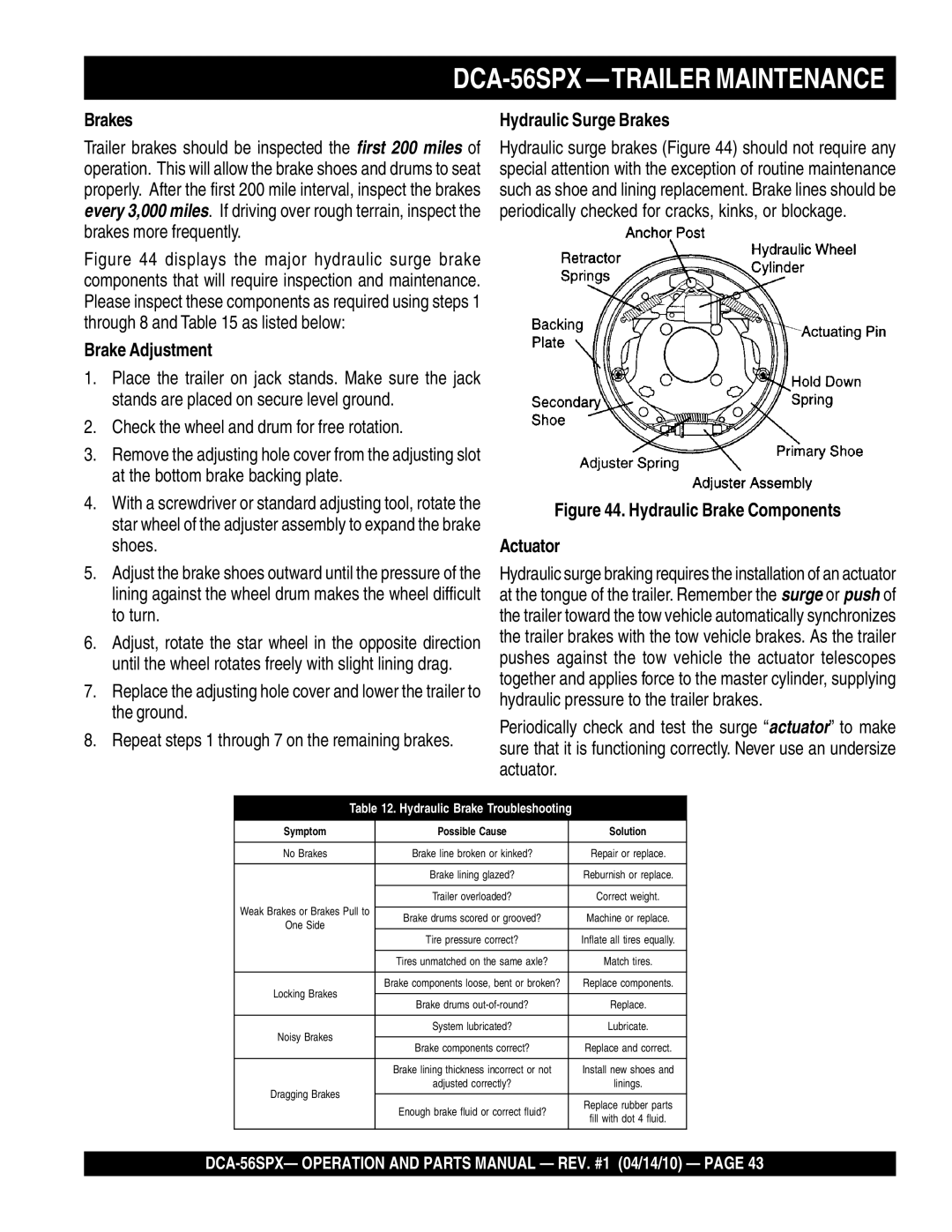DCA-56SPX specifications
The Multiquip DCA-56SPX is a versatile and robust portable generator designed for a variety of applications, from construction sites to outdoor events. This generator combines performance, reliability, and user-friendly features, making it an essential tool for both professionals and DIY enthusiasts.At the heart of the DCA-56SPX is a powerful Yanmar diesel engine that delivers a maximum output of 56 kVA. This generator is engineered for high efficiency and longevity, with a robust design that allows it to run for extended periods under heavy loads. The engine also adheres to stringent emissions standards, ensuring environmentally friendly operation without compromising performance.
One of the standout features of the DCA-56SPX is its advanced digital control panel. This user-friendly interface provides real-time monitoring of key parameters, such as voltage, frequency, and total runtime. It simplifies the operation and maintenance of the generator, enabling users to make informed decisions about power management. The control panel also includes safety features, such as low oil pressure and high-temperature shutdowns, to protect the engine from potential damage.
The DCA-56SPX is also equipped with a sound-attenuated enclosure, significantly reducing noise levels during operation. This feature is particularly beneficial in urban environments or areas where quiet operation is a priority. Moreover, the durable, weather-resistant design of the generator ensures reliable performance in various outdoor conditions.
Portability is another key characteristic of the DCA-56SPX. The generator is fitted with heavy-duty wheels and a sturdy frame that allows for easy transport across job sites. In addition to its mobility, the unit is designed for easy access to service points, facilitating quick maintenance and minimizing downtime.
Flexibility is further enhanced by the generator's multiple output options, including 120/240V single phase and 120/208V three-phase configurations. This versatility allows users to connect various tools and equipment, making the DCA-56SPX suitable for numerous applications, from powering construction machinery to providing backup power during outages.
Overall, the Multiquip DCA-56SPX stands out due to its robust design, efficient engine, advanced control technologies, and user-oriented features. It is an excellent investment for those seeking a reliable power source that can handle demanding tasks while ensuring safety, portability, and efficiency. Whether for construction, event planning, or emergency situations, the DCA-56SPX delivers dependable performance to meet diverse power needs.

